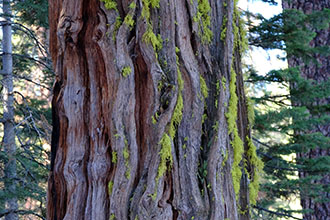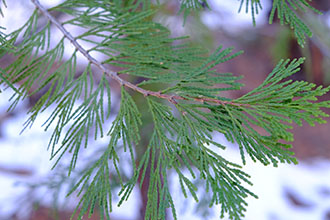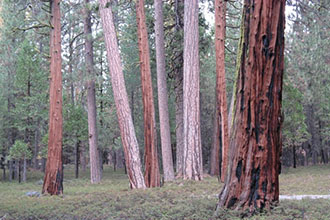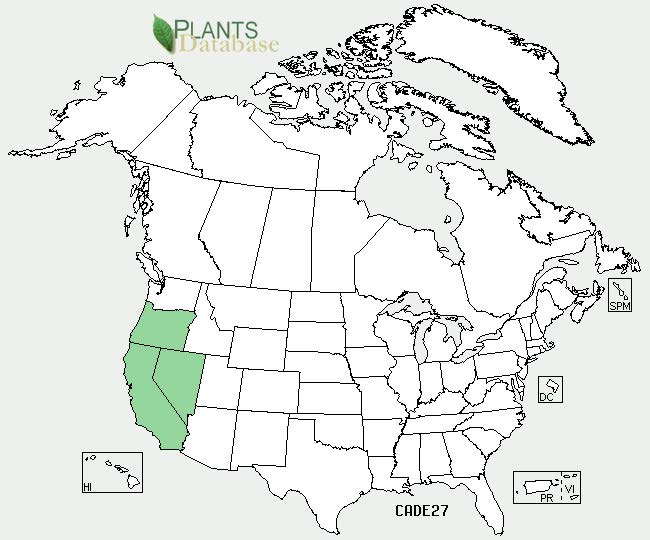Taxonomy: Kingdom - Plantae (plants). Subkingdom - Tracheobionta (vascular plants). Superdivision - Spermatophyta (seed plants). Division - Coniferophyta (conifers). Class - Pinopsida. Order - Pinales. Family - Cupressaceae (cypress). Genus - Calocedrus Kurz. Species - Calocedrus decurrens (Torr.) Florin
Ecology: Incense-cedar is shade tolerant. Seedlings establish readily in shade, and trees persist in the shaded understory for long periods. In many stands, incense-cedar is an important component of both the understory and the overstory. It occupies a "subdominant" crown position in several forest types. Incense-cedar is an important component of mixed-conifer forests in southern Oregon, California, and northern Baja California. Incense-cedar is also common in white fir (Abies concolor) forests at the upper margin of the mixed-conifer zone in southwestern Oregon and northern California and giant sequoia (Sequoiadendron giganteum) groves in the Sierra Nevada mixed-conifer zone of California. In Sierra Nevada mixed-conifer forests it may account for half of the stems in a stand. Incense-cedar occurs with bigcone Douglas-fir (P. macrocarpa) in southern California and with Jeffrey pine (Pinus jeffreyi) and ponderosa pine (Pinus ponderosa var. ponderosa) throughout much of its range. Incense-cedar and Jeffrey pine are common associates on serpentine soils. On the east side of the Oregon Cascade Range, incense-cedar occurs in dry ponderosa pine forests. On the eastern slope of the Sierra Nevada, it grows with ponderosa pine, Jeffrey pine, sugar pine (P. lambertiana), and white fir. Incense-cedar grows with Oregon white oak (Quercus garryana) and California black oak (Q. kelloggii) in southern Oregon and California. It is a minor associate in canyon live oak (Q. chrysolepis) forests and may also extend into the chaparral zone in California.



